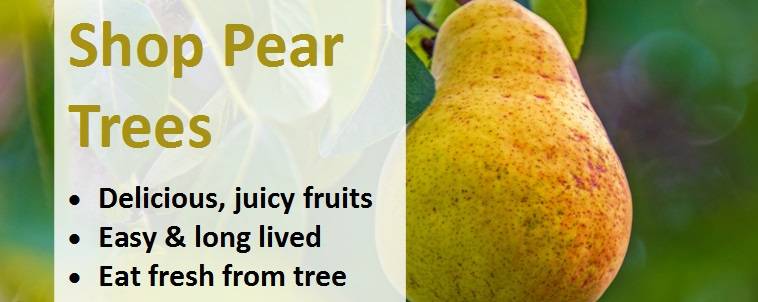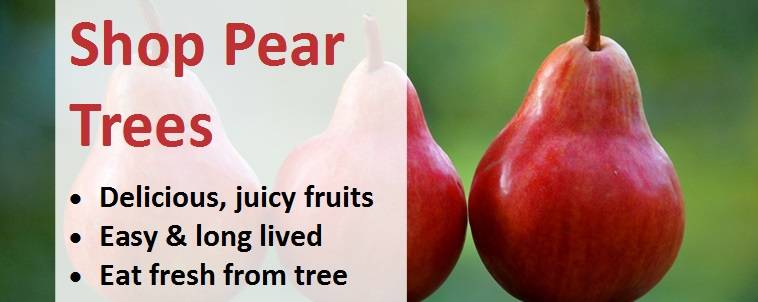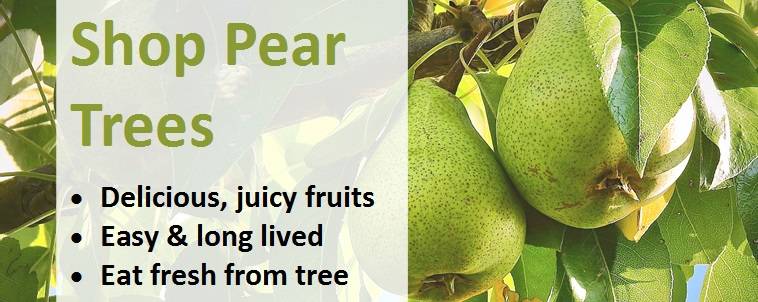How to Grow Your Own Pear Tree
Pear trees are easy to grow, suitable for containers and very long lived. Whilst they take a few years to reach the fruiting stage, they can be expected to live for a century, or even longer, producing plenty of sweet and juicy crops, making them the grandfather of the orchard or kitchen garden. With careful site selection, planting and aftercare, pear trees will yield a handsome reward for the rest of your life. There is nothing like eating fresh fruit straight from the tree in autumn; far better than anything available from the supermarket shelves. Different varieties produce their fruit at different times of the year and late ripening varieties store well, so you can have a plentiful stock that can be enjoyed throughout the winter. Pears grow on rootstocks which determine the ultimate size of the tree and are a key factor in getting a successful crop.
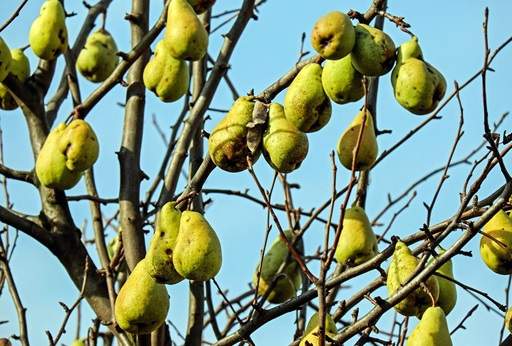
Pear trees can live to over a century old, giving you a handsome yield for the rest of your life
Fruit
Pear trees originated in western China in the foothills of the Tian Shan, a mountain range of Central Asia. There are now around 3,000 varieties of pear grown worldwide which all fall into 2 types - dessert pears for eating and cooking pears for cooking. Fruit is produced on spurs, which appear on shoots more than one year old. If picked early, pears can be stored at room temperature until ripe. Pears ripen from the inside out and the process can be sped up by placing your pears next to bananas in the fruit bowl. Dessert pears will be ripe, sweet and juicy when the flesh around the neck or stem end gives to gentle pressure; if it is still firm, re-check daily for ripeness.
Cooking pears will remain green, dry and hard even when ripe and are only edible after several hours of cooking. Pears have a range of sweet and savoury culinary uses, including poached pears with blackberry sauce dessert; pork with pears; pear, hazelnut and chocolate cake; maple pears with pecans and cranberries; and Christmas pear tart. They are high in fibre and a good source of vitamin C, especially in the skin of the fruit. Along with apples, pears have recently been shown to be one of the fruits which most consistently lowers the risk of type 2 diabetes. If the name of the place you live ends in 'perry', this is likely to indicate the historic presence of pear trees, so you have no excuse not to grow one of your own!
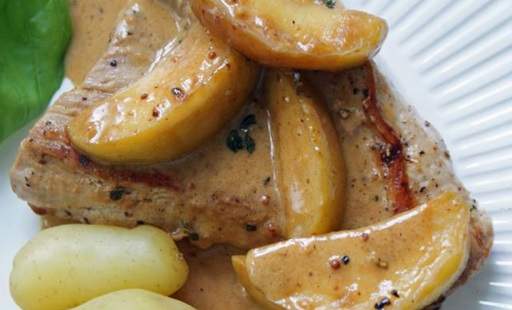
Pork with pears is one of the great savoury dishes that can be made with the fruit
Recommended Pear Varieties
The best pear varieties are:
- Pear Concorde - deciduous modern dessert pear with sweet and juicy, yellow flesh and pale green skin which ripens to yellow with gold or brown russeting. As a cross between Pear Conference and Pear Doyenne du Comice it is heavy cropping with a compact growth habit. Starts producing fruit when very young, so you won't be kept waiting for your first crop. Self-fertile but produces larger crops when planted with another pear in pollination group C nearby.
- Pear Beurre Hardy - large, handsome russet dessert pears with pale, brown-green skin and white flesh that's smooth, juicy, sweet and aromatic. This is one of the best garden varieties producing white, ornamental flowers and bright red deciduous autumn foliage colour. Self-fertile but produces larger crops when planted with another pear in pollination group C nearby.
- Pear Doyenne du Comice - a large, delightful, fine-flavoured dessert pear with pale green flesh and green skin which ripens to bright yellow-green and is sometimes flushed with red. Ideal for training as a fan or cordon on a south-facing wall. Although self-fertile we recommend growing alongside a pollinator such as Pear Concorde to guarantee a plentiful crop of fruit.
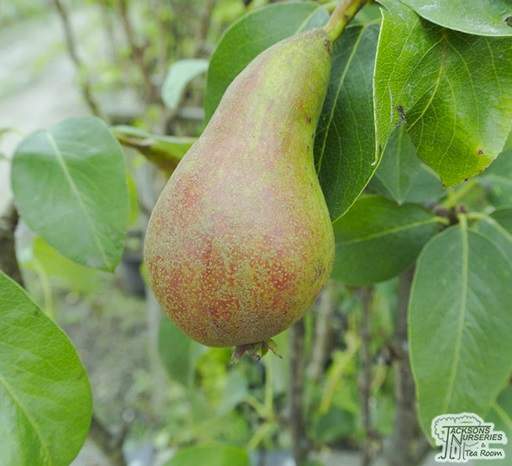
- Pear Conference - delicious, long, yellowish-green fruits with attractive, silvery russeting and a rich almost buttery flavour that's perfect for using in desserts. Broadly columnar growth habit which becomes smothered in a fabulous display of highly ornamental, white blossom in April. Perfect for an open, sunny site. Pollination group B.
- Pear Williams Bon Chretien - large dessert pear that has pale green flesh, ripening to golden-yellow, with a soft and juicy flavour. Hardy and reliable deciduous variety that becomes clothed in a fabulous display of pure white flowers in mid-spring. Produces regular, consistent crops of strong, deliciously sweet fruit. Easily trained into any desired shape/size. Pollination group B.
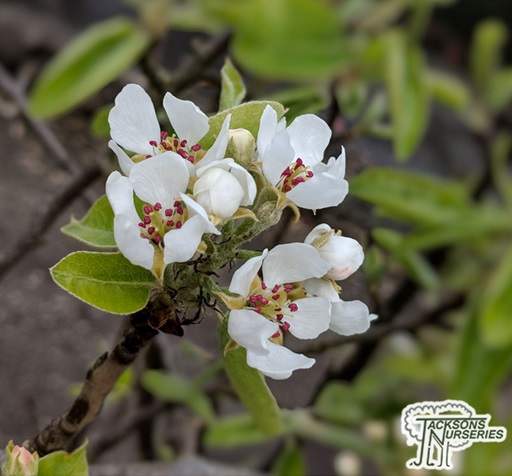
Types of Rootstock
Pear trees are not grown on their own roots. The top of the tree (the part that produces the pears) is grafted onto a different set of roots called a rootstock, and the roots control the size of the tree. The 4 main types of rootstock are:
- M27 - smallest trees, fruiting early and suitable for vigorous cultivars. Require staking
- M9 - dwarf bushes, spindle bushes and cordons. Come into bearing early and need stakes
- M26 - produces a larger tree, coming into bearing a year or two later
- MM106 - produces a semi-dwarfing tree used for bush, spindle bushes, cordons, espaliers and fans
We indicate the 'Eventual Height' of all fruit trees we sell on our individual plant pages, so whilst it's useful to be aware of the different types of rootstock, you don't need to remember the sizes that they each grow to because these are clearly indicated for you when choosing a tree.

Pollination Groups
Self-fertile pear trees such as Pear Conference will produce fruit without the need for another tree to pollinate it. If your tree if not self-fertile, it will need to be paired with another one from the same pollination group. Pears are grouped into pollination groups according to when they flower. Choose at least 2 different cultivars in the same or adjacent pollination groups and plant within 20m of each other (preferably as close together as possible). Even self-fertile varieties crop more heavily with a partner.
Planting Advice
Container grown trees can be planted at any time of year providing there is not a frost and the ground is not waterlogged, although autumn planting is preferable, as they need less watering than ones planted in spring or summer. Bare root trees can be planted from late autumn to the end of winter as this is when the tree is in its dormant stage. If the ground is frozen, or you can't plant for some other reason, 'heel' in your pear tree in a shallow trench, angling the trunk and covering the roots at the bottom of the trunk with moist soil.

Choose a sunny, sheltered position well away from any frost pockets and avoid poorly drained or shallow soils. We recommend growing your fruit tree(s) along a south-facing wall or fence. The wall will soak up the heat of the sun, allowing for a longer ripening time. Pear trees are slightly less tolerant to cold temperatures and wind compared to apple trees, mainly because they flower slightly earlier, so be extra careful to ensure the chosen site isn't too exposed. When you're ready to plant, give the roots of the tree a good soaking before planting. Be careful to ensure the depth of the planting hole is adequate to accommodate all of the root system - it should be the same depth and one-third wider than the root ball. Once you've finished digging, break up the bottom of the planting hole with a fork and build in plenty of well-rotted organic matter such as manure, leaf mould or well-rotted garden compost. At this stage, recheck the depth of the planting hole using a cane or rod; it is vital to match the depth of planting to the depth at which the tree has been grown on our nursery.
Next, carefully place the root ball of your new fruit tree into the hole, apply a general purpose fertiliser to the soil you've just dug out, then backfill into the planting hole again and firm with your boot. If you are planting a bare root fruit tree, as the topsoil is backfilled, shake the tree up and down to allow the soil to filter around the roots. Once you've finished backfilling, ensure that the tree remains upright and the graft union (the point when the fruit variety is grafted onto the rootstock) is not buried. Drive a sturdy stake into a point on the windward side of the hole that will match up well with the tree once planted. Attach the tree to the stake using a tree tie, remembering to use a buffer to prevent chaffing.
Finally, tidy the planting hole and water thoroughly. Apply a thick mulch of organic matter, taking care not to allow it to accumulate around the crown of the tree. The ground mulch applied at planting time should be repeated annually - this should help to retain moisture and smother weeds so there is no competition in the vital root active areas.
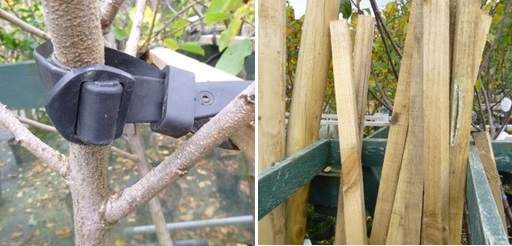
Our Planting Kit with stake, tree tie and Osmocote tablets is perfect to give your new fruit tree the best start
If container growing your fruit tree, choose a container 45-50cm (18-20 inches) in diameter. Place some small pieces of polystyrene, broken concrete or clay at the bottom and use a soil-based compost (John Innes No 3 is ideal) to half-fill your pot or tub, then place your tree on top. Finish by filling in the pot/tub with more compost to the base of your tree, ensuring you do not cover the crown, and water thoroughly.
Pruning
Pear trees should be pruned every year to encourage new growth on which new buds will form and ensure a good harvest the following season. Trees that are not pruned become less productive and congested with old branches and diseased shoots. Pruning is easy, even for the novice gardener - use a pair of secateurs to create an open goblet shape with a framework of about 5 main branches. Thought is needed in setting out the basic framework of the tree and reducing shoots by about one-third to a bud in an outward pointing direction. Prune pear trees in late autumn and winter, supplementing with light pruning in summer if absolutely necessary in smaller gardens. Cordons and other forms of intensive fruit trees should be pruned during the summer months from the third week in July or in areas with heavy rainfall, further north or in wet summers from the second week in August.
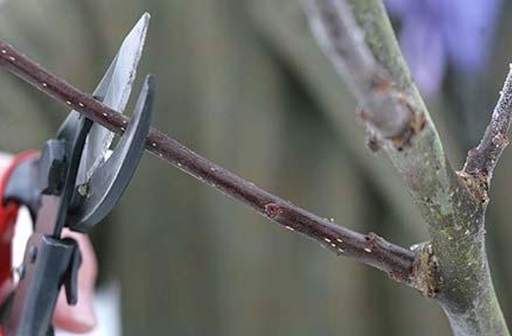
Prune your pear tree using a pair of secateurs
Harvesting your Pears
Ideally, harvest pears just as they are starting to loosen from their stalks before they are fully ripe. They should be firm and swollen, with a subtle colour change to their skin. You can check whether late pear varieties are ready to be harvested by seeing whether they part easily from the tree when lifted and gently twisted (if they do, they're ready for harvesting). Harvesting time is harder to judge for early varieties, so it's better to taste test them for sweetness to check they're ready for picking also. Once picked, store your pears to allow them to ripen fully: early cultivars usually need a week or so until they become softer, while later ones may need months before being ready for eating.
Pests & Diseases
Pear trees have fewer problems with insects and diseases than other fruit. They normally just grow and produce year after year, with very little fuss or attention, particularly if you choose a disease resistant tree (all varieties we stock are suitable). To further defend your tree from moths and caterpillars, apply a grease band 45cm (18 inches) above soil level to the trunk of your tree and tree stake in late autumn. This will protect the tree from moths that may otherwise destroy your fruit and leaves. The grease band is a glue or sticky paper that prevents wingless female moths from reaching the branches of the tree to mate, thereby preventing caterpillars which would eat the leaves and fruit of your precious fruit tree. If you have the time, we also recommend using an oil-based winter wash in December or January to kill off any over-wintering pests.
There are three particular pests and diseases which occasionally cause problems on pear trees. Brown rot is a fungal disease in fruit with the evidence being small white blisters or pimples on the skin of your pears. It normally strikes in very wet summers. Pear rust is a fungal disease causing orange spots on the tops of pear leaves, normally around fruiting time. Pear leaf blister mite causes red and yellow blisters on the pear leaves that eventually turn dark purple or black. Whilst the damage is unsightly, it does not affect the harvest. In all of the above cases, remove and destroy all affected parts of the plant to prevent the problem from spreading further. Unfortunately, no chemical control is available.
Garden Care
Pears require very little care and attention once established. Apply a slow release multi-purpose fertiliser in the spring as soon as new growth starts to show, followed by a thick organic mulch, being careful to ensure the mulch does not touch the central trunk. When your pear trees start to flower in April, protect blossoms from any late frosts by covering them with a few layers of horticultural fleece at night. Remove the fleece during the day to allow pollination. Keep the base of your trees weed-free to avoid competition for moisture, especially in the summer, and water during prolonged periods of dry weather and when the fruit starts to swell. Finally, the stems of cordon varieties should be tied in as they grow, starting in May.
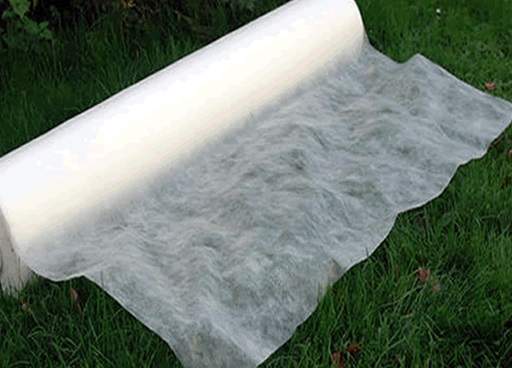
Protect pear blossoms from late frosts by covering them with horticultural fleece at night
Share this page:

